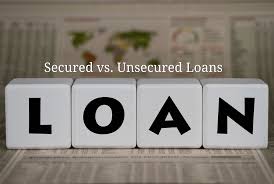For small businesses in Australia, access to capital is often the lifeblood of operations, enabling growth, managing cash flow fluctuations, and seizing opportunities. Traditional bank loans can be cumbersome, with lengthy application processes and stringent requirements that often disadvantage smaller or newer enterprises. This has led to the rise of online loans for small businesses in Australia, offered by a growing number of non-bank lenders and fintechs. These digital platforms provide a fast, flexible, and often unsecured alternative, tailored to the unique needs and pace of modern small business operations. This comprehensive guide will explore the various types of online business loans available, their benefits, key considerations, and how Australian small businesses can responsibly leverage them to fuel their ambitions.
The Evolving Landscape of Small Business Finance
Traditional banks, while still significant, have often been slow to adapt to the agility required by small businesses. Their emphasis on collateral, extensive paperwork, and long approval times can stifle a business’s ability to act quickly on opportunities or manage sudden cash flow gaps. Online lenders have stepped into this gap, leveraging technology to offer:
- Speed: Applications often take minutes, with decisions in hours and funding within 24-48 hours.
- Convenience: Entirely online process, accessible from anywhere.
- Flexibility: Diverse products catering to different business needs and risk profiles.
- Reduced Paperwork: Automated data verification (e.g., direct bank statement access) simplifies the application.
Types of Online Loans for Small Businesses in Australia
The online business lending market in Australia offers several distinct products:

- Unsecured Business Loans:
- Description: The most common type of online business loan. They do not require specific assets (like property or equipment) as collateral.
- Amounts: Typically range from $5,000 to $500,000 (though some go higher).
- Terms: Short to medium-term, from 3 months to 3 years, with daily or weekly repayments often preferred to align with business cash flow.
- Benefits: Fast approval, no asset required, flexible use of funds.
- Considerations: Higher interest rates than secured loans due to increased lender risk.
- Secured Business Loans:
- Description: While often still applied for online, these loans require an asset as collateral (e.g., real estate, vehicle, equipment, or accounts receivable).
- Benefits: Lower interest rates and potentially larger loan amounts than unsecured options.
- Considerations: Risk of losing the asset if the business defaults.
- Business Line of Credit:
- Description: Rather than a lump sum, a line of credit provides access to a revolving pool of funds up to a certain limit. Businesses only pay interest on the amount they draw down.
- Benefits: Flexible cash flow management, ideal for managing seasonal fluctuations, unexpected expenses, or short-term working capital needs. Funds are available on demand.
- Considerations: Can be tempting to over-rely on; interest rates can sometimes be higher than term loans.
- Invoice Finance (Debtor Finance):
- Description: Businesses can get an advance on their outstanding invoices. The online lender typically provides a percentage of the invoice value upfront, then collects the full amount from the client (or the business collects and repays the lender).
- Benefits: Converts accounts receivable into immediate cash, improving cash flow without taking on traditional debt.
- Considerations: Fees are charged on the invoice value; relies on the creditworthiness of the business’s clients.
- Equipment Finance:
- Description: Specifically for purchasing business equipment (e.g., machinery, vehicles, technology). The equipment itself often acts as security for the loan.
- Benefits: Preserves working capital, often comes with competitive rates due to the secured nature.
- Considerations: Funds are tied to specific asset acquisition.
Who Qualifies for Online Business Loans? Common Eligibility Criteria
While criteria vary by lender and loan type, common requirements for online business loans include:
- Australian Business Number (ABN) / Australian Company Number (ACN): Must be an Australian-registered business.
- Trading History: Typically, a minimum of 6-12 months in operation (some lenders may consider less for very small amounts or specific industries).
- Minimum Monthly/Annual Turnover: Lenders usually have a minimum revenue threshold (e.g., $5,000 – $10,000+ monthly, or $50,000+ annually).
- Business Credit Score: While some lenders offer online loans for bad credit businesses, a healthy business credit profile improves terms.
- Owner’s Credit Score: Many online lenders will also assess the personal credit score of the business owner(s), especially for unsecured loans.
- Director’s Guarantee: For unsecured loans, business owners (directors) typically need to provide a personal guarantee, meaning they are personally liable if the business defaults.
- GST Registration: Often required, especially for larger loans.
Benefits of Online Loans for Australian Small Businesses
- Speed and Accessibility: Quick application, fast decisions (hours to 24 hours), and rapid funding (often same-day or next business day) are critical for urgent needs.
- Simplicity and Convenience: Entirely online, minimal paperwork due to automated bank statement analysis.
- Flexibility: Funds can be used for a wide range of business purposes – working capital, inventory, equipment, marketing, debt consolidation, hiring.
- No Collateral (for Unsecured Loans): Many options don’t require specific business assets as security, which is beneficial for businesses without significant tangible assets.
- Tailored Repayment Schedules: Many lenders offer daily or weekly repayments, which can align better with typical business cash flow than monthly bank repayments.
- Alternative for New/Smaller Businesses: Often more accommodating than traditional banks for businesses with shorter trading histories or smaller turnovers.
Key Considerations and Risks for Borrowers
- Higher Costs: Online business loans (especially unsecured ones) generally come with higher interest rates and fees than traditional bank loans, reflecting the speed, convenience, and higher risk profile. Always compare the total cost (effective annual rate or comparison rate).
- Shorter Terms: Repayment terms are often shorter, meaning higher individual repayment amounts. Ensure these are genuinely affordable within your business’s cash flow.
- Personal Guarantee: Be aware that most unsecured online business loans require a personal guarantee, making the business owner personally liable for the debt.
- Responsible Lending (Business Context): While ASIC’s responsible lending obligations primarily apply to consumer loans, reputable online business lenders will still conduct thorough affordability assessments to ensure the loan is suitable for your business and won’t cause undue hardship.
- Transparency: Ensure the lender is transparent about all fees, charges, interest rates, and the total cost of the loan. Look for lenders that adhere to industry codes of conduct (e.g., AFIA Online Small Business Lenders Code).
When to Consider an Online Business Loan
Online loans for small businesses are particularly suited for:
- Urgent Cash Flow Gaps: Bridging shortfalls between invoices and payments.
- Working Capital: Funding day-to-day operations, inventory, or payroll.
- Seizing Opportunities: Quickly funding a new project, marketing campaign, or bulk purchase at a discount.
- Equipment Upgrades: Purchasing smaller equipment without a lengthy traditional loan process.
- Unexpected Expenses: Covering unforeseen repairs or costs.
- Debt Consolidation: Consolidating higher-cost business debts into a single, more manageable loan.
Choosing the Right Online Lender
- Verify Licensing/Reputation: While online business lenders don’t always require an ACL (which is for consumer credit), ensure they are reputable and ideally members of industry associations (e.g., FinTech Australia, Australian Financial Industry Association – AFIA).
- Understand All Costs: Get a clear breakdown of the interest rate, establishment fees, and any other charges. Don’t just look at the weekly/daily repayment amount in isolation.
- Read the Terms and Conditions: Understand the repayment schedule, penalties for late payments, and any early repayment fees.
- Customer Reviews: Check independent reviews to gauge other businesses’ experiences.
- Match Loan to Need: Ensure the loan amount, term, and type are appropriate for your specific business purpose.
Conclusion: An Agile Partner for Business Growth
Online loans for small businesses in Australia represent a dynamic and increasingly essential segment of the finance industry. By offering unparalleled speed, convenience, and flexibility, they empower businesses to manage cash flow, invest in growth, and respond swiftly to market demands. While they typically come with higher costs than traditional bank loans, their accessibility and efficiency often make them a valuable and necessary tool. By thoroughly researching options, understanding all costs, and engaging with reputable financial institutions that provide clear terms, Australian small businesses can responsibly leverage these online loans to navigate their financial challenges and seize opportunities for success.













